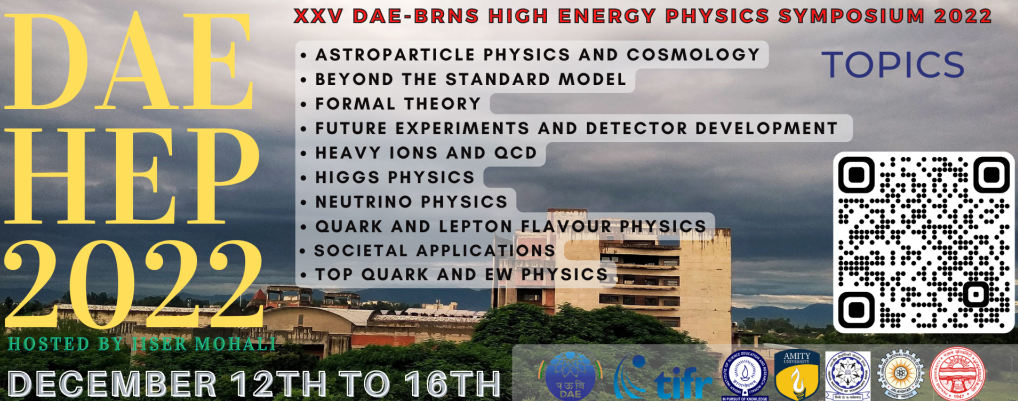Speaker
Description
In this work, we have considered an extension of the standard model (SM) with a $SU(2)_L$ singlet vector-like quark (VLQ) with electric charge $Q=+2/3$. The model also contains an additional local $U(1)_d$ symmetry group and the corresponding gauge boson is the dark photon. The VLQ is charged while all the SM particles are neutral under the new $U(1)_d$ gauge group. Even though in this model the VLQ possesses many properties qualitatively similar to that of the traditional top partner ($T_p$), there are some compelling differences as well. In particular, its branching ratio to the traditional modes ($T_p \to bW, tZ, th$) are suppressed which in turn helps to evade many of the existing bound, mainly coming from the LHC experiments. In an earlier work, such a VLQ is referred to as "maverick top partner". It has been shown that the top partner in this model predominantly decays to a top quark and a dark photon/dark higgs pair ($T_p \to t\gamma_d ,~th_d$) over a large region of the parameter space. The dark photon can be made invisible and consequently, it gives rise to the missing transverse energy ($\not\!\!{E} _{T}$) signature at the LHC detector. We have mainly focused on the LHC signatures and future prospects of such top partners. In particular, we have studied the $t\bar{t}+\not\!\!{E}_{T}$ and $t+\not\!\!{E}_{T}$ signatures in the context of the LHC via pair and single productions of the top partner, respectively at 13 and 14 TeV LHC center of mass energies assuming that the dark photon either decays into an invisible mode or it is invisible at the length scale of the detector. We have shown that one can exclude $\sin\theta_L \sim 0.025$ (0.05) for $m_{_{T_p}} \leq $ 2.0 (2.6) TeV at $\sqrt{s}=14$ TeV with an integrated luminosity of 3 ab$^{-1}$ using the single top partner production channel.
| Session | Beyond the Standard Model |
|---|
